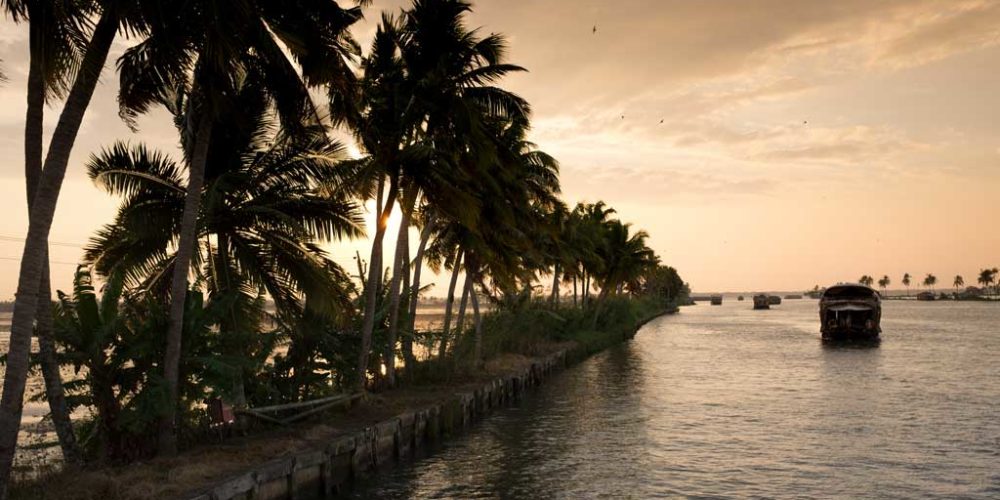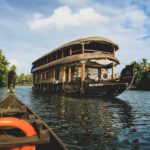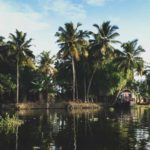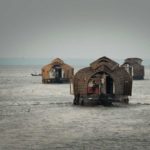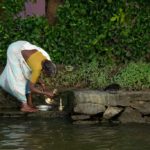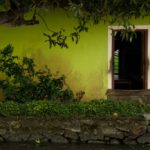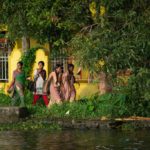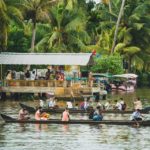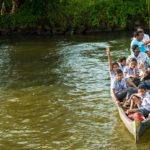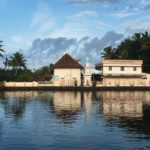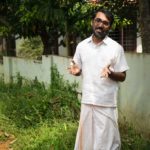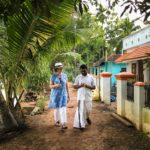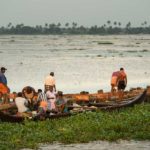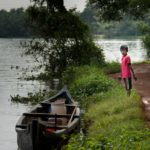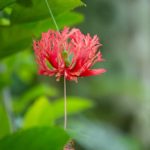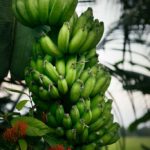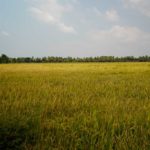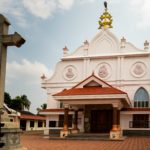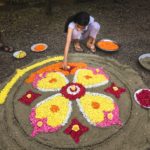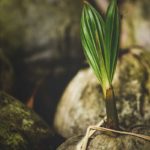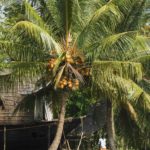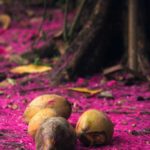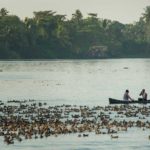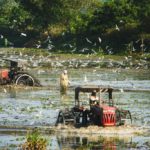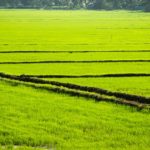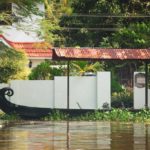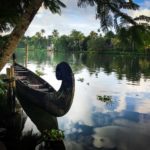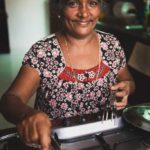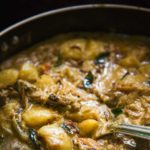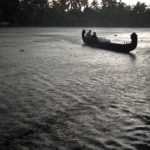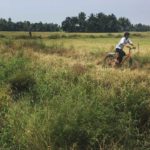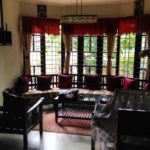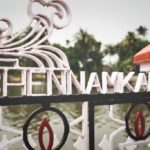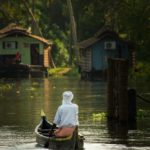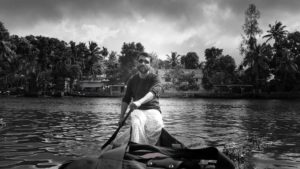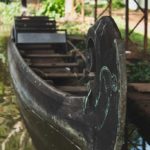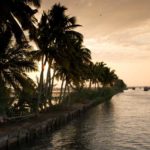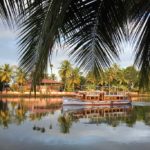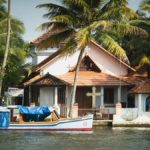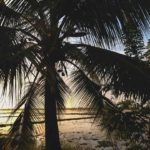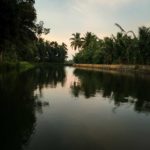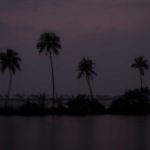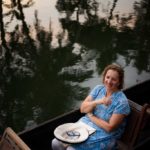The first time I visited Alleppey in the Backwaters of Kerala, it was to enjoy a houseboat cruise and to take a walk with an elder in the tiny village of Chennamkary. I wanted to learn about the way of life there. It was 2012.
Houseboating
I spent 24 hours cruising the lakes and channels of Alleppey on a traditional thatched roof Kettuvallam houseboat. There were a few hundred of these 100 foot long by 13 food wide vessels then. There were no restrictions on their movement. They could motor throughout this area of India where the Arabian Sea meets fresh water. Estuaries, channels and lagoons here are fed by rivers that flow like ribbons off the shoulders of verdant growth on the Western Ghat mountains.
Formerly, this style of boat was used to transport goods throughout the area where roads were scarce. Each boat can hold a cargo of up to 30 tonnes. That’s about as much as three tractor trailers.
The boat I cruised on, had been converted to a luxurious three bedroom floating home complete with a formal dining room, living room, sun deck and a kitchen. It came with a fabulous cook and two attendants who assisted the boat’s captain when they weren’t serving meals and scrubbing the decks.
During our cruise, we spent a leisurely afternoon floating past towns where chains of humans passed massive white bags of freshly harvested rice over their heads – from strong arms to strong arms – to load the lines of lorries waiting dockside. We’d drifted past villages where women scrubbed and thwack thwacked their laundry on steep steps leading into the water. Children played and sarong-clad older men bathed, with a vigorous lathering of soap, right alongside them.
We’d watched water taxis and school bus boats transport the locals in crisscrossing waves across the channels. I remember a woman in a fuchsia pink sari paddling her dugout canoe loaded with big aluminum pots of food to workers in a rice field. Fishermen cast nets from their brightly painted flat bottom dinghies. Radios blared Malayalee tunes from homes tucked between their dyke’s paths and the paddy fields beyond. Toddlers jumped up and down and waved their hands to say hello to us. School-aged children with sparkling clean uniforms waited on docks or walked the mud paths together in clumps. They also lifted their heads to wave and smile. The iridescent blue of Kingfishers’ wings flashed from where they sat on wires above us and white egrets pecked their way through the damp fields. Men were climbing ladders to the tops of coconut trees. Freshly white washed Christian churches appeared on the banks at regular intervals. They were like pearl prayer beads on a red mud string.
After a lunch and mid-afternoon chai and banana fritters, we moored near a quiet rice paddy, far from the villagers’ homes, to dine on the catch of the day and to sip Kingfisher beer into the night. When we reluctantly turned-in, the air-conditioning of our bedchambers drowned out the cacophony of creatures serenading the low-lying moon. The roar of the diesel engine coming to life and the boat casting off in the early morning signalled time for breakfast. Back to our dock we went and a short drive later, we arrived for our village walk to help us understand all that we had seen.
Meeting Thomas
This is when I first met my friend, Mr. Thomas Zaccharia, a village elder in Chennamkary. I was not sure of his age but his sageness was evident. He loved meeting me and my friends and had all the patience in the world for our questions. He knew, and stopped to greet, everyone we met on our walk. This included school children on their way home to the elderly women prepping dinner’s vegetables as they sat and talked on their front verandahs, to those washing their clothes on the dyke-side steps.
We learned that the Dravidians (they were the earliest people to come from away, reportedly from the Mid East, to mix with the indigenous people) had built up this land from deltas and that if maintenance was not done annually to reclaim the ever receding mud from the waterways, the area would be under water once again within a few years.
We watched as a professional mud-diver submerged for minutes at a time to fill his arms with clay from the watery depths. He carried it up and hurled it into a dugout. With this precious reclaimed earth, he would then rebuild dyke banks for the family that had hired him. Thomas told us that this special worker needed to stop and eat and drink many times a day to keep his energy up as this was very demanding work. He sighed then and said, that sadly, within a decade, the mud-divers would all be gone. He feared that the quiet, ancient ways of the Backwaters would be gone with them.
Indeed, as we had floated through this idyllic Eden the day before, it felt like we were peering through a precious window into a disappearing culture and world. It was all very National Geographic, imagery that sticks and makes an impact.
In his own family, Thomas’s brother and sister had both left for education and careers in England. He was educated locally and had remained to run the family’s rice farm. Caring for 10-acres of land, helping with his mother Anna’s homestay – the local’s version of a Bed and Breakfast – and being involved in his Syrian Christian church and community were the things that mattered most to him. Both sides of the local political parties wanted him to join but he preferred to remain a pundit and offer advice to both.
The flora and fauna of this lush place fascinated. Types of hibiscus that can only be found in Kerala draped their vibrant red spikes over the paths. Orchids in tree notches lent pastel hues, frangipani lent its soft tropical scent. Orange and pink bougainvillea encased the brightly coloured and well cared for homes. Every garden had a cluster of banana plants, chili plants and fresh vegetable plots. Coconuts were everywhere.
Coconuts
Thomas talked to us of the importance of the coconut tree and told us that the word Kerala literally translates to land of coconuts. He invited us to take a closer look at the fruits and we saw that as one bunch of coconuts was ready to harvest, there were others just sprouting and more in the various stages in between. He shared that every 40 days, the tree yields a harvest and that every part of the plant was used by the Keralan people.
Coconut tufts or threads are made into coir for weaving matts or making ropes. The flesh is enjoyed in all manner of foods and pressed for milk. Oil is extracted. The men we’d seen climbing ladders to the tops of coconut trees were tapping them to gather and ferment the liquid for vinegar to make a coconut beer called Toddy. The logs are used to make boats and the leaves are used as plates or to wrap food or to thatch roofs.
Seeing a huge flock of ducks being herded by a net and men in two boats, Mr. Thomas explained that there is an unspoken agreement between the duck farmers and the rice farmers. After a field of rice is harvested, the duck farmers are allowed to let the ducks forage for leftover seeds and to feed on any bugs. The bonus for the rice farmers is that the ducks leave a goodly amount of fertilizer and often remove unwanted pests.
We walked past a “Toddy” shop and Mr. Thomas sighed. Too many of the local men drink their wages away in these shops. Keralans consume more alcohol than any other state in India (8.3 litres per person per year, according to The Economist). The government has raised the legal drinking age from 18 to 21 and mandated that bars cannot be open before eight in the morning. These measures have helped somewhat but marriages still suffer as does workers’ productivity.
When we parted on that day in 2012, Thomas pointed across the water to his own home. He said, you really must come back and visit my home, eat my mother’s famous duck curry and bring more friends.
I first returned in 2014.
I brought a large group and once again booked an overnight houseboat trip for them to enjoy. In just a few short years though, the houseboat industry had gone from charm to harm. Where there had been a few hundred houseboats there were now closer to a thousand. They were restricted on where they could cruise and their diesel fuels were polluting the ecosystem. I vowed not to contribute to that problem again.
The highlight was our visit to Green Palm Homes and keeping my promise to Thomas. Crossing the channel in Thomas’s ancient dug out canoe, that seats 20 comfortably, to finally meet his family, see their home and eat his mother Anna’s famous duck curry revived my memories of what was authentic about this place.
After Anna’s fabulous banana leaf thali (a multi-course meal), featuring the mouth-watering duck curry, we walked and talked as a group into the late afternoon. The winds shifted then and low grey clouds appeared from the ether. It was late monsoon season and as the barometer plummeted, we hustled to get the group back across the channel to our waiting bus.
I stayed back with Thomas’s mother until all the group had crossed and the flood that is a monsoon broke its dam just as I entered the last canoe. Grabbing my arm and running under the wall of rain, Thomas shouted, you really must come again. Next time you’ll stay at my mother’s homestay. Then you’ll really appreciate the peace of this place.
Home to Stay
And so, that is how Pauli-Ann and I ended up at Green Palm Homes in September of 2016. I could not get that idea of a night under the stars, breathing tropical flowers and falling asleep in the lap of Kerala’s backwaters out of my head. Thomas is very good with the power of suggestion.
This time, instead of just eating Anna’s delicious food, we got to spend a day cooking with her.
Over the next several posts we’ll be sharing her story and many of her Syrian Christian food specialties including her famous duck curry.
We loved the immersion of this Keralan homestay experience. We had one of the large air-conditioned guest rooms on the upper floor of the home. We mingled with the family, touring the garden, sitting on the front porch and laughing as the teens raced through the house to show us their latest YouTube find. We gathered with the family to eat at the kitchen table late that evening.
Before dinner though, as the sun started to set, Thomas delivered on a promise he had made to me. When he had suggested I return to stay with his family, I had said I would if he would take me out to paddle the waterways at sunset. Now, that time I’d dreamed of had come.
Peaceful paddling
Pauli-Ann and I walked to the water’s edge. Thomas and a friend waited in his ancestral dugout canoe, oars in hand. We climbed in and settled in comfort to circumnavigate the channels surrounding Thomas’s village and farm.
In the main channel, water taxis and buses, ferries and those ubiquitous houseboats sped by us. We waved and soaked up the golden rays and softening temperature of the day. We entered a canal and could smell food cooking on backyard charcoal grills. The light dipped from gold to a faint pink hue and then dimmed completely. What was lost to our senses in sight was gained in sound.
The swish of the paddles and drips of water between strokes was soon drowned by an orchestra of insects that came to life in deafening song. Their vibration penetrated the barrier that separates beings. With eyes shut it was easy to feel the harmony of the universe, to know that beyond physical there is only oneness. More than peace, it was a sense of being part of life itself.
Eyes open again, the moon broke through the draping coconut fronds and guided us back to the open waters of the wider channel. A choir practicing in a church competed with music blaring from a local youth club. Closer to home, Thomas and his friend serenaded us in rounds with folk songs their father’s fathers had sung to them.
We pulled up next to Green Palm completely lulled and coated in a layer of enchantment. What was this place like a thousand or a hundred years ago? We’ll never know. But I am deeply content that I was able to fulfill my promise to my friend and to receive such a gift in return from him.
I hope you too may experience this place as Thomas would like all visitors to have the chance to do. May you too be nurtured by its food, cradled by its families and immersed in its soul.
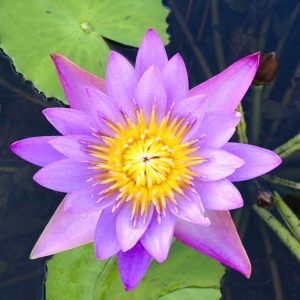 Gratitude
Gratitude
Thank you to Green Palm Homes for hosting us during our visit to Chennamkary and to the KTM Society and Travel XS for sponsoring our travel throughout South India in 2016.
All words and photos are our own and were not shared with the sponsors before publication.

